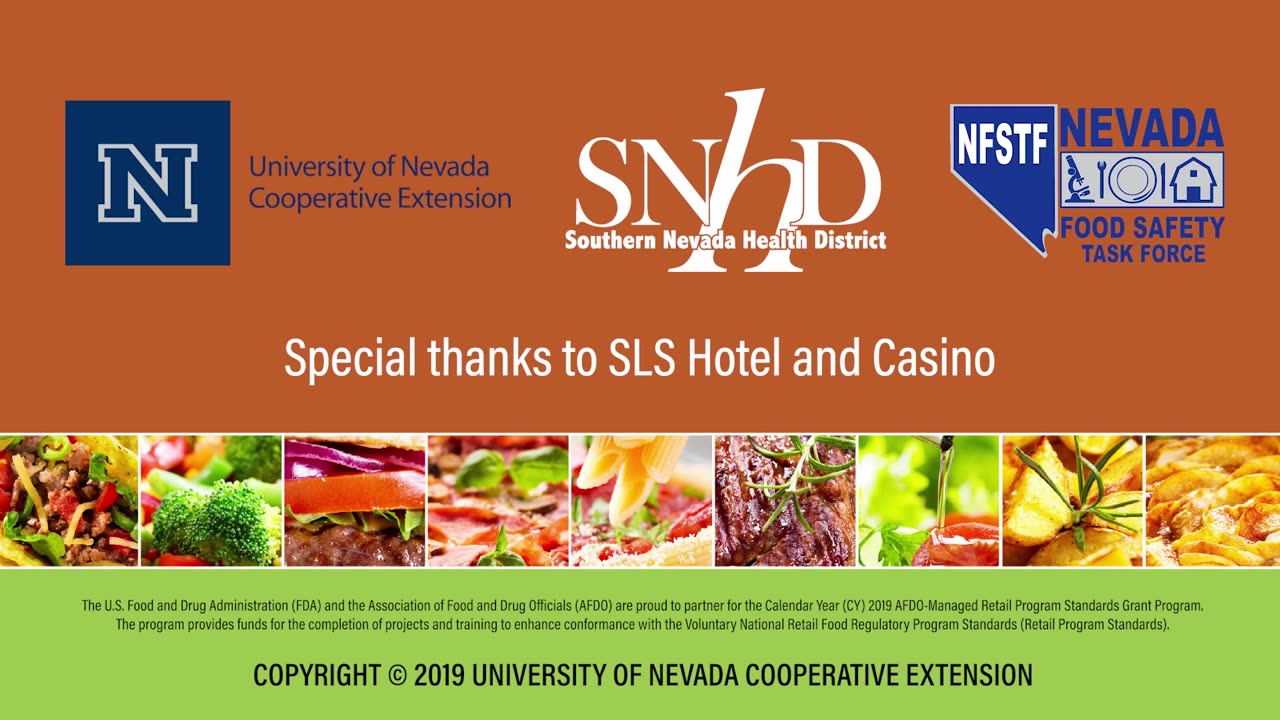Premium Only Content

Module 11 — Safe Cooking
### **Module 11: Safe Cooking**
Cooking food safely is critical to eliminate harmful pathogens that can cause foodborne illnesses. This module covers the principles, practices, and guidelines for cooking food to safe temperatures while preserving its quality.
---
### **1. Importance of Safe Cooking**
- **Destroys harmful pathogens**: Proper cooking kills bacteria, viruses, and parasites.
- **Prevents foodborne illnesses**: Reduces risks associated with undercooked food.
- **Enhances safety and quality**: Ensures food is safe to eat and tastes its best.
---
### **2. Safe Cooking Temperatures**
Cooking temperatures vary depending on the type of food. Always use a calibrated thermometer to check the internal temperature. Below are recommended minimum internal cooking temperatures:
| **Food Type** | **Temperature** | **Rest Time** |
|-----------------------------|-------------------|--------------------|
| Poultry (whole or ground) | 165°F (74°C) | None |
| Ground meats (beef, pork) | 160°F (71°C) | None |
| Beef, pork, veal, lamb (steaks, chops, roasts) | 145°F (63°C) | 3 minutes |
| Fish and seafood | 145°F (63°C) | None |
| Eggs (for immediate service)| 145°F (63°C) | None |
| Egg dishes (e.g., quiches) | 160°F (71°C) | None |
| Leftovers and reheated food | 165°F (74°C) | None |
---
### **3. Cooking Practices to Ensure Safety**
#### **A. Even Cooking**
- Cut food into uniform pieces for consistent cooking.
- Stir soups, stews, and casseroles frequently to distribute heat evenly.
#### **B. Avoiding Cross-Contamination**
- Use separate utensils and cutting boards for raw and cooked foods.
- Clean and sanitize thermometers after each use.
#### **C. Proper Use of Thermometers**
- Insert the thermometer into the thickest part of the food, avoiding bones or fat.
- Wait until the reading stabilizes before recording the temperature.
---
### **4. Cooking Methods**
#### **A. Grilling and Broiling**
- Ensure meats are cooked to the proper internal temperature.
- Avoid charring as it can produce harmful compounds.
#### **B. Baking and Roasting**
- Preheat ovens to the required temperature before cooking.
- Use shallow pans to ensure even heat distribution.
#### **C. Frying**
- Maintain oil at the correct temperature to avoid undercooking or burning food.
- Drain excess oil to reduce fat content and improve safety.
#### **D. Steaming and Boiling**
- Ensure all parts of the food are exposed to high heat.
- Use lids to retain heat and cook food evenly.
---
### **5. Rest Time for Meats**
- Resting meat after cooking allows the temperature to remain high enough to kill any residual bacteria and improves flavor and juiciness.
- Follow recommended rest times for steaks, chops, and roasts.
---
### **6. Common Cooking Mistakes to Avoid**
- **Undercooking**: Failing to reach the safe minimum temperature can leave harmful bacteria alive.
- **Overcrowding**: Too much food in a pan can prevent even cooking.
- **Not preheating appliances**: Starting with a cold grill, oven, or pan can result in uneven cooking.
- **Guessing temperatures**: Always use a thermometer instead of relying on appearance or texture.
---
### **7. Cooking Safety Tips**
- Never partially cook food to "finish later" without proper precautions.
- Do not leave cooked food out at room temperature for more than 2 hours.
- Avoid reheating food multiple times as it reduces quality and safety.
---
### **8. Cooking and Food Allergens**
- Use dedicated utensils and cookware to avoid allergen cross-contact.
- Clearly label foods that may contain common allergens.
---
### **9. Safe Cooking and HACCP**
- Safe cooking is a critical control point in HACCP (Hazard Analysis and Critical Control Points) plans.
- Regular monitoring of cooking temperatures ensures compliance with safety standards.
---
### **Conclusion**
Cooking food safely is one of the most crucial steps in food handling. By following temperature guidelines, practicing good hygiene, and using proper tools, food handlers can protect consumers and ensure high-quality meals.
-
 6:43
6:43
HSESafetyInformation
3 months agoLahori Chanay Recipe - Lahori Cholay Recipe - Chana Chana Masala
49 -
 2:40:04
2:40:04
sophiesnazz
14 hours ago $0.26 earnedPLAT RANKEDDDDD !socials
8.92K1 -
 4:24:28
4:24:28
GloryJean
19 hours agoMotivational Monday! Frying on MnK 🖱️ 6.7 K/D
5.7K1 -
 10:18
10:18
Truther Steve
13 hours agoDO Christians REALLY Know Their Enemy's Power?
9.41K3 -
 12:30
12:30
Actual Justice Warrior
12 hours agoLong Island Prankster Is Going To JAIL
9.07K14 -
 13:36
13:36
Nate The Lawyer
2 days ago $0.47 earnedJudge Removed For Illegally Releasing Criminals From Jail
13.9K18 -
 18:13
18:13
Scammer Payback
3 days agoScammers saying Insane things
12.3K12 -
 1:44
1:44
New York Post Sports
2 days agoCoco Gauff Wins First French Open Title
13.2K1 -
 8:53
8:53
The Dana Show with Dana Loesch
2 days agoCritics Are LOSING IT Over Marvel's Possible Decision
15.3K10 -
 23:07
23:07
Clownfish TV
2 days agoGen Z Retcons the 1980s...
15K31